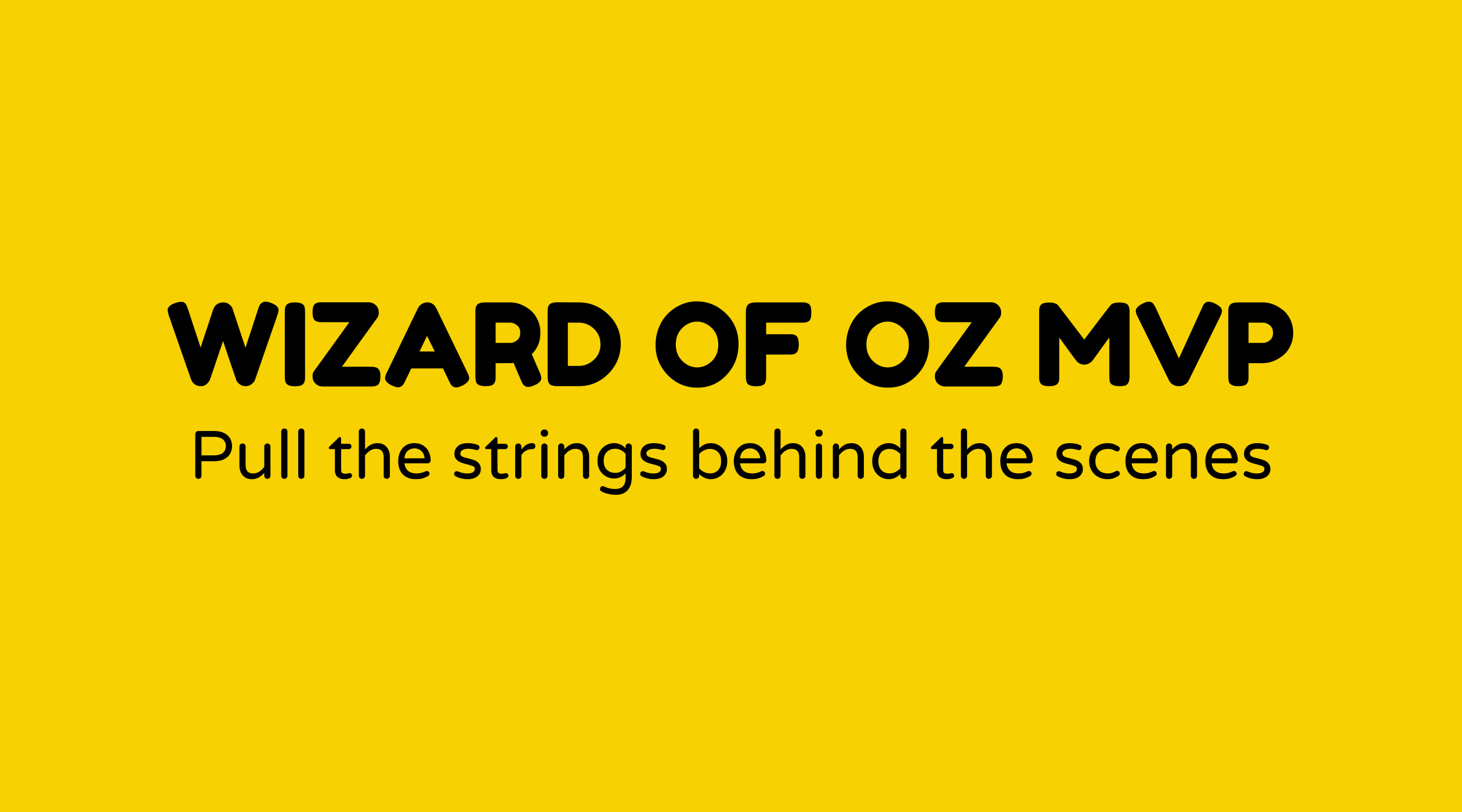Wizard of Oz MVP

Overview of Wizard of Oz MVP:
Let’s examine a concept that feels somewhat magical in the realm of product development — the Wizard of Oz MVP. Imagine the initial phases of product creation, where you may be uncertain about customer interest or the product's feasibility. This technique proves useful here. It's inspired by the classic story where the Wizard creates an impressive illusion. This MVP approach enables you to gather vital customer feedback without significant effort or investment.
Why Wizard of Oz MVP Matters:
So, why should you pay attention to the Wizard of Oz MVP? In today's constantly changing market, where flexibility and responsiveness are crucial, this method provides an economical and quick way to test ideas. It connects the gap between concept and reality, allowing you to assess genuine user interactions without constructing a complete product. This leads to quicker validation and helps steer clear of possible project issues. By focusing on customer perceptions, you can refine your offering to better align with user needs.
What is Wizard of Oz MVP:
A Wizard of Oz MVP revolves around creating a false impression. You design your product or service to appear complete, while, behind the scenes, the process is somewhat manual. For example, envision a chatbot that appears fully automated but is operated by a person. This enables you to understand user behavior and demand without the need for sophisticated systems. It’s akin to testing the waters before fully committing, conserving time and resources on features that might not be relevant.
How do you do Wizard of Oz MVP:
How can one get started with a Wizard of Oz MVP? Here’s a straightforward guide:
- Identify the Core Problem: Pinpoint the main issue your product aims to solve.
- Design the User Interface: Create the interface the user will engage with, even if it’s just a façade.
- Man the Controls: Establish a manual system behind the scenes to handle the automated task.
- Gather Feedback: Observe user interactions closely and collect data to guide future iterations.
- Iterate Quickly: Utilize the insights to refine both the product concept and its features.
This approach provides realistic insight into actual usage without incurring high initial costs.
Examples of Wizard of Oz MVP:
Here are some noteworthy instances where the Wizard of Oz MVP has shown effectiveness:
-
Zappos: Before becoming an online retail leader, they tested the concept by photographing shoes from local stores and displaying them online. When an order came in, they would purchase and ship the shoes—manual yet effective.
-
Groupon: Initially used existing software and email newsletters to validate the group-buying concept before creating a tailored platform.
These examples illustrate how starting small and manual can lead to significant business decisions.
FAQs
-
Does Wizard of Oz MVP work for every product?
Not always. It’s best for assessing user interactions and validating concepts at a low cost. For physical products, some adjustments may be needed. -
Can you scale a Wizard of Oz MVP?
The method itself isn't designed for scaling, but it helps identify which aspects of the product should be scaled. -
What’s the difference between Wizard of Oz MVP and a prototype?
A prototype generally includes a partially built product, whereas the Wizard of Oz MVP might be entirely manual behind a façade. -
How long should you run a Wizard of Oz MVP?
Run it until you gather enough data for informed decisions, which varies based on the product. -
Is transparency important with the Wizard of Oz MVP?
This varies by context and user expectations. Maintain ethical practices to uphold trust. -
What are the risks involved?
Risks include user dissatisfaction if they discover the illusion, as well as challenges in scaling manual processes.



